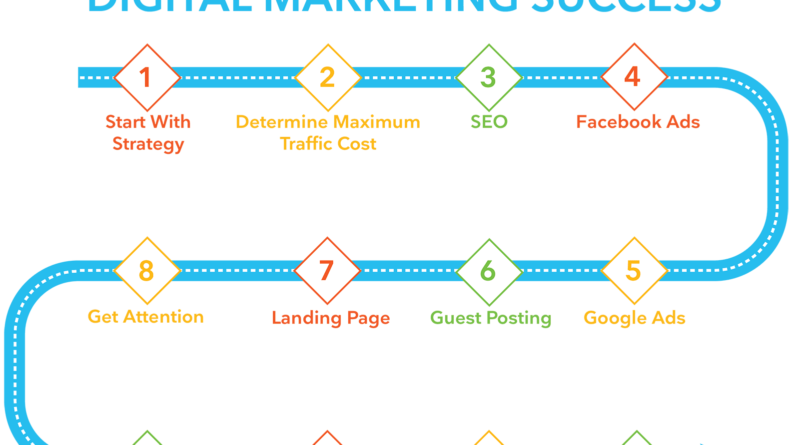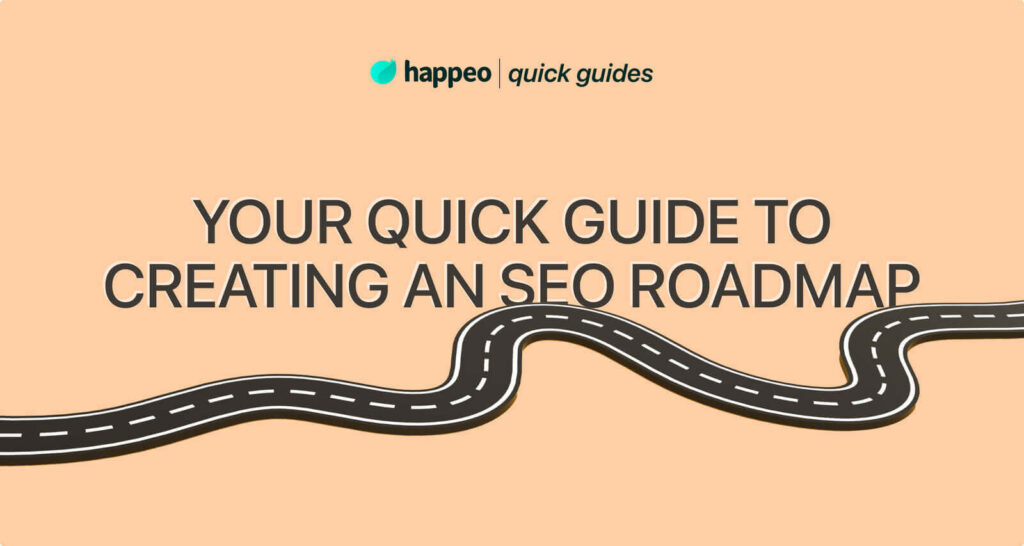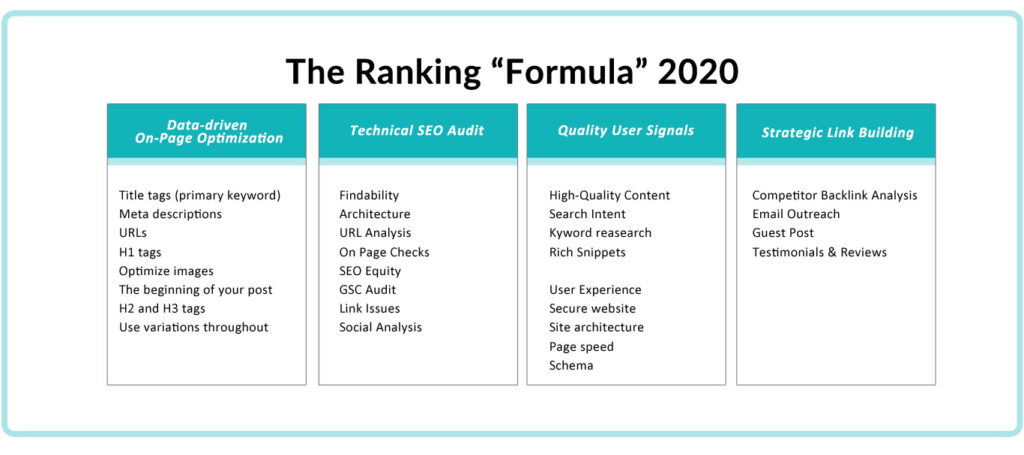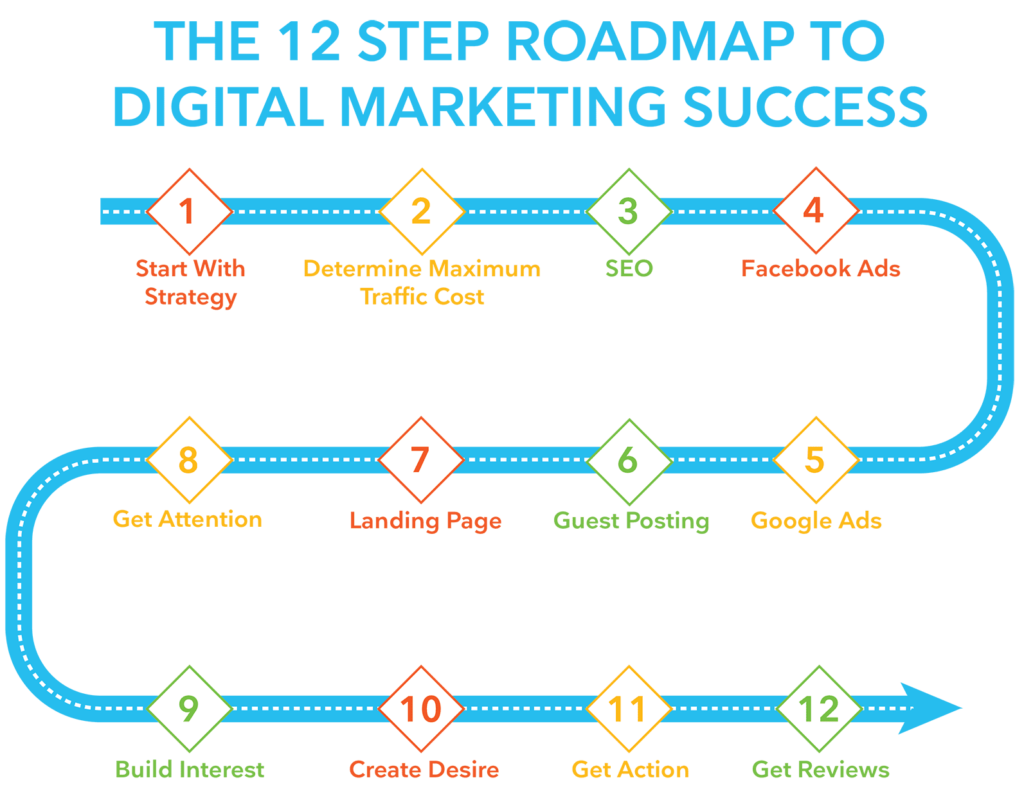
In this ultimate guide, you will discover everything you need to know about creating SEO roadmaps. Whether you’re new to the world of search engine optimization or a seasoned pro looking to level up your strategy, this comprehensive article will provide you with a step-by-step roadmap to success. From conducting thorough keyword research to implementing on-page optimization techniques, we’ve got you covered. So grab a cup of coffee, sit back, and get ready to master the art of SEO roadmapping!
Why SEO Roadmaps are Important
SEO (Search Engine Optimization) roadmaps are essential tools for any business or website owner looking to improve their online visibility and attract more organic traffic. These roadmaps provide a structured plan and a clear direction for implementing SEO strategies and achieving long-term success.
What is an SEO Roadmap?
An SEO roadmap is a detailed plan that outlines the steps and actions needed to optimize a website for search engines. It serves as a guide and a roadmap to follow throughout the SEO process, ensuring that all necessary tasks are completed and no critical aspect is overlooked.
Benefits of SEO Roadmaps
Investing time and effort in creating an SEO roadmap can bring numerous benefits to your website or business. Here are some key advantages of utilizing an SEO roadmap:
-
Improved Visibility: Implementing targeted SEO strategies outlined in a roadmap increases your website’s visibility across search engines, allowing more users to discover your content.
-
Increased Organic Traffic: A well-executed SEO roadmap can lead to higher rankings on search engine results pages (SERPs) and drive more organic traffic to your website.
-
Better User Experience: SEO roadmaps often include technical optimizations and on-page improvements that enhance the overall user experience on your website.
-
Competitive Advantage: By analyzing competitors and setting clear goals in your roadmap, you can gain a competitive edge in your industry and outperform your rivals in search rankings.
-
Long-Term Results: SEO roadmaps are designed to focus on long-term success rather than quick fixes. By following a roadmap, you build a solid foundation for sustainable growth and consistent search engine visibility.
Getting Started with SEO Roadmaps
Before diving into creating an SEO roadmap, it’s crucial to lay the groundwork and perform essential research. Here are three key steps to get started:
Performing Keyword Research
Keyword research is a fundamental aspect of any SEO strategy. It involves identifying and analyzing the specific keywords and phrases that your target audience uses when searching for products, services, or information related to your website. Effective keyword research helps you understand what terms to target and optimize your content accordingly.
Analyzing Competitors
Analyzing your competitors is an essential part of creating an SEO roadmap. By evaluating their online presence, content strategies, and backlink profiles, you can identify gaps and opportunities to gain an advantage. This analysis also helps you understand the competitive landscape in your industry and adapt your SEO approach accordingly.
Setting Clear Goals
Setting clear and specific goals is crucial in any SEO roadmap. Define what you want to achieve with your SEO efforts, whether it’s increasing organic traffic, improving rankings for specific keywords, or driving conversions. These goals will guide your strategy and help you measure success along the way.

Creating Your SEO Roadmap
Once you have completed the initial research and goal setting, it’s time to create your comprehensive SEO roadmap. This roadmap should cover various aspects of SEO to ensure a well-rounded approach. Here are key steps to consider:
Identifying Target Audiences
Understanding your target audience is essential for effective SEO. Identify the demographics, interests, and preferences of your audience to tailor your content and optimize your website to meet their needs. This step ensures that your SEO efforts align with the interests of your potential customers.
Defining Target Keywords
Building on the earlier keyword research, it’s important to define a list of target keywords and phrases that are relevant to your website and align with your target audience. Incorporating these keywords strategically throughout your content and optimizing meta tags helps search engines understand the purpose and relevance of your pages.
Structuring On-Page Optimization
On-page optimization involves optimizing individual web pages to improve their visibility on search engine results pages. This includes optimizing title tags, meta descriptions, headers, and URLs, as well as ensuring the use of relevant keywords within the content. Proper on-page optimization enhances the overall search engine visibility of your website.
Technical SEO Considerations
In addition to on-page optimization, technical SEO plays a crucial role in improving your website’s search engine visibility. Here are some key considerations to include in your SEO roadmap:
Optimizing Website Speed
Website speed is a critical factor in both SEO and user experience. Slow-loading websites can negatively impact rankings and lead to higher bounce rates. Optimizing your website’s speed by reducing server response time, optimizing images, and minifying code will enhance user experience and boost search engine rankings.
Implementing Schema Markup
Schema markup is a structured data markup language that helps search engines understand and display information from your website more effectively. Implementing schema markup on your website enables search engines to provide enhanced search results, such as rich snippets, which can significantly improve click-through rates and increase organic traffic.
Handling Redirects
Redirects are necessary when changing page URLs or restructuring your website. However, improper handling of redirects can lead to broken links and negatively impact search engine rankings. Ensure that your SEO roadmap includes a plan for handling redirects correctly to avoid any negative consequences.

Content Strategy for SEO
Content plays a crucial role in SEO, as it serves as the foundation for targeting keywords, engaging users, and attracting backlinks. Here are important steps to consider in your SEO roadmap:
Researching and Planning Content
Thorough research and planning are essential for creating high-quality, valuable content. Identify topics and keywords that align with your target audience’s interests and develop a content strategy that addresses their needs. Properly researched content ensures that your website provides the information users are searching for.
Optimizing Content for Keywords and User Intent
Keyword optimization involves strategically incorporating target keywords into your content without compromising its quality and readability. Additionally, consider matching the user intent behind each keyword by providing comprehensive and relevant information in your content. This ensures that your website satisfies user queries and increases the chances of ranking higher in search results.
Developing an Editorial Calendar
An editorial calendar helps you plan and organize your content creation and publication schedule. By mapping out topics, dates, and key milestones, you ensure a consistent flow of content that aligns with your SEO goals. An organized editorial calendar helps you stay on track and maintain a steady stream of high-quality content.
Off-Page SEO Strategies
Off-page SEO involves activities and strategies implemented outside your website to improve its search engine rankings. Here are some crucial off-page SEO strategies to include in your SEO roadmap:
Building High-Quality Backlinks
Backlinks from reputable and relevant websites are crucial for SEO success. Include link-building activities in your roadmap to acquire high-quality backlinks naturally. This can be done through outreach, content promotion, and guest blogging, among other strategies. Quality backlinks indicate to search engines that your website is trustworthy and authoritative.
Guest Blogging and Influencer Outreach
Guest blogging involves writing and publishing content on other websites within your industry. This strategy allows you to reach a larger audience, establish your expertise, and acquire valuable backlinks. Influencer outreach involves partnering with industry influencers to promote your content, increasing its reach and visibility.
Using Social Media for SEO
Leveraging social media platforms is an effective way to amplify your SEO efforts. Promote your content and engage with your audience on social media channels. By sharing your content and building a strong online presence, you increase the chances of attracting backlinks and driving more traffic to your website.

Measuring and Tracking Success
Implementing an SEO roadmap is not enough; you need to measure and track the success of your efforts to ensure you’re on the right path. Consider the following in your SEO roadmap:
Setting Up Website Analytics
Implementing website analytics tools like Google Analytics enables you to track crucial metrics such as traffic sources, user behavior, and conversions. These insights help you understand the impact of your SEO strategies and make informed decisions to optimize your website further.
Tracking Keyword Rankings
Regularly monitoring your keyword rankings allows you to evaluate the effectiveness of your optimization efforts. Track the progress of your target keywords in search engine rankings and adjust your strategies accordingly to maintain or improve your positions.
Monitoring Traffic and Conversion
Analyzing your website’s traffic and conversion rates helps you determine the effectiveness of your SEO strategies in driving relevant visitors and converting them into customers. Monitoring these metrics allows you to fine-tune your SEO roadmap and optimize your website for better results.
Staying Up to Date with SEO Trends
SEO is an ever-evolving field, and it’s crucial to stay updated with the latest trends and best practices. Here are some strategies to consider:
Following Industry Blogs and News
Following reputable industry blogs and news outlets keeps you informed about the latest SEO developments, algorithm changes, and trends. Stay updated on the latest strategies and best practices shared by industry experts.
Attending SEO Conferences and Webinars
SEO conferences and webinars provide valuable insights and networking opportunities. Attend industry events to learn from experts, gain new perspectives on SEO strategies, and connect with like-minded professionals.
Networking with SEO Professionals
Building relationships with other SEO professionals allows you to share insights, discuss challenges, and learn from one another. Join SEO forums, participate in online communities, and engage in networking events to expand your network and stay on top of the latest SEO trends.

SEO Tools and Resources
Utilizing the right tools can streamline your SEO efforts and provide valuable data and insights. Here are some key tools to consider:
Keyword Research Tools
Keyword research tools like Google Keyword Planner, SEMrush, and Ahrefs help you identify relevant keywords, analyze search volume, and understand keyword difficulty. These tools provide valuable data to optimize your content and improve search visibility.
SEO Analytics Platforms
Tools like Google Analytics and Google Search Console offer detailed analytics and performance metrics to monitor and analyze your website’s SEO performance. These platforms provide essential insights to refine your SEO strategies and track progress.
Crawling and Indexing Tools
Crawling and indexing tools like Screaming Frog and DeepCrawl help you analyze and optimize the technical aspects of your website. These tools identify issues such as broken links, duplicate content, and crawlability problems that may impact your search engine rankings.
Conclusion
Creating and implementing an SEO roadmap is vital for improving your website’s search engine visibility and driving organic traffic. By performing thorough research, setting clear goals, and covering various aspects of SEO, you can establish a solid foundation for sustainable growth and long-term success. Remember to adapt your roadmap as SEO trends and algorithms evolve, and leverage the right tools and resources to enhance your SEO efforts. With a well-structured SEO roadmap in place, you’re on your way to maximizing your online presence and achieving success in the digital landscape.








